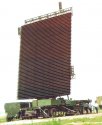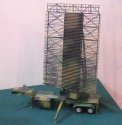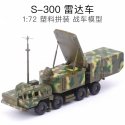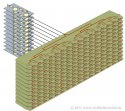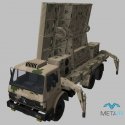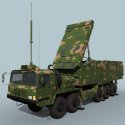Fine, fine. Yes, technically IFF isn't functionally the same as a radar. Let's just say they are all T/R arrays.
It means in the case of the thinner ones, the LNA itself is not on the array but somewhere in the bottom of the array right underneath the roof of the deckhouse. In the case of the IFF arrays on the 055, the LNAs. is right behind the array itself
You don't have to be sure. The website from which it came seems to be pretty sure, though:
Here is an example of an AESA which seems to me to be even thinner than all of the PESA photos you have posted so far.
The fact is that I have provided examples of both thin AESAs and thick PESAs. The problem for you is that you have no way to get inside the housing of those 055 bar arrays to be able to tell which is which, and unable to judge AESA vs PESA based on thickness of the housing alone.
Oh wait. You do realize that the PESAs and AESAs you shown are
not phase arrays, right? .How can a PESA and an AESA not be a phase array?
That's because PESA and AESA only stands for Electronically Steering Arrays. Not all ESAs are phase arrays. There are other ways that arrays can electronically steer. There is no phase shifters used here. That's why they look thin, they comprise of a planar array with linear elements.
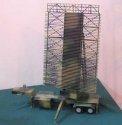
And that is why it looks like this. And not like this.

The one on the left is a true phase array. The one on the right is not a phase array. Both are PESAs however.
I am referring to AESAs that are planar arrays that scan only in elevation. The way they do it is that every linear element has a slight delay in the feed that causes a slight change in the emitter frequency of each linear element. This results in a phenomena called frequency steer. These arrays scan and steer up and down this way by frequency change, but has no ability to steer right and left, which is why they have to be mechanically rotated.
So you have arrays with only linear elements but without phase shifters.
But this is still an AESA because when you look at it, note the how the center of it is thick. That's where the modules that support each linear element are housed. In this array, you can see through it just like the one on top, and you can see its back.

This is another frequency steering array, like the array on top, it is not a phase array per but it is still a PESA
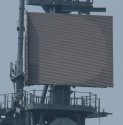
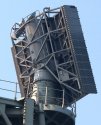
Unlike TPS-59 which has the modules on the center of the array, SPS-48 does not have any modules on the back of the array. You can also see that SPS-48 also has a serpentine line feed on the side that feeds every linear element with a sequential slight delay, causing a slight change in each frequency emitted on each linear element. The frequency change causes the radiating pattern to steer up and down. If you go back to the second picture of this post, you can see the radar on the right of the Tombstone phase array also has its line feed on the side of the array. These arrays only scan by elevation by frequency steering and has to be mechanically rotated for horizontal scanning.
In the case of the AESA doing frequency steer, each module feeding each linear element uses a time delay from one another in a sequential manner.
That's why to tell a PESA from an AESA, you have to see what's in the side and back. And quite frankly, even YLC-2 and TPS-59 still looks thicker than SPS-48 because of the large and thick center backbone of the radar that houses all the modules.
Finally, there is one thing all these radars have in common is that all have IFF transponders at the top of the radar. The most common position for IFF is to be directly at the top of the radar, and that is why the bars on the top of the Type 346B on the 055 should be IFF. The next common position would be at the bottom of the radar like on the Tombstone there. There are exceptions to this like when you have ring shaped IFF however.











